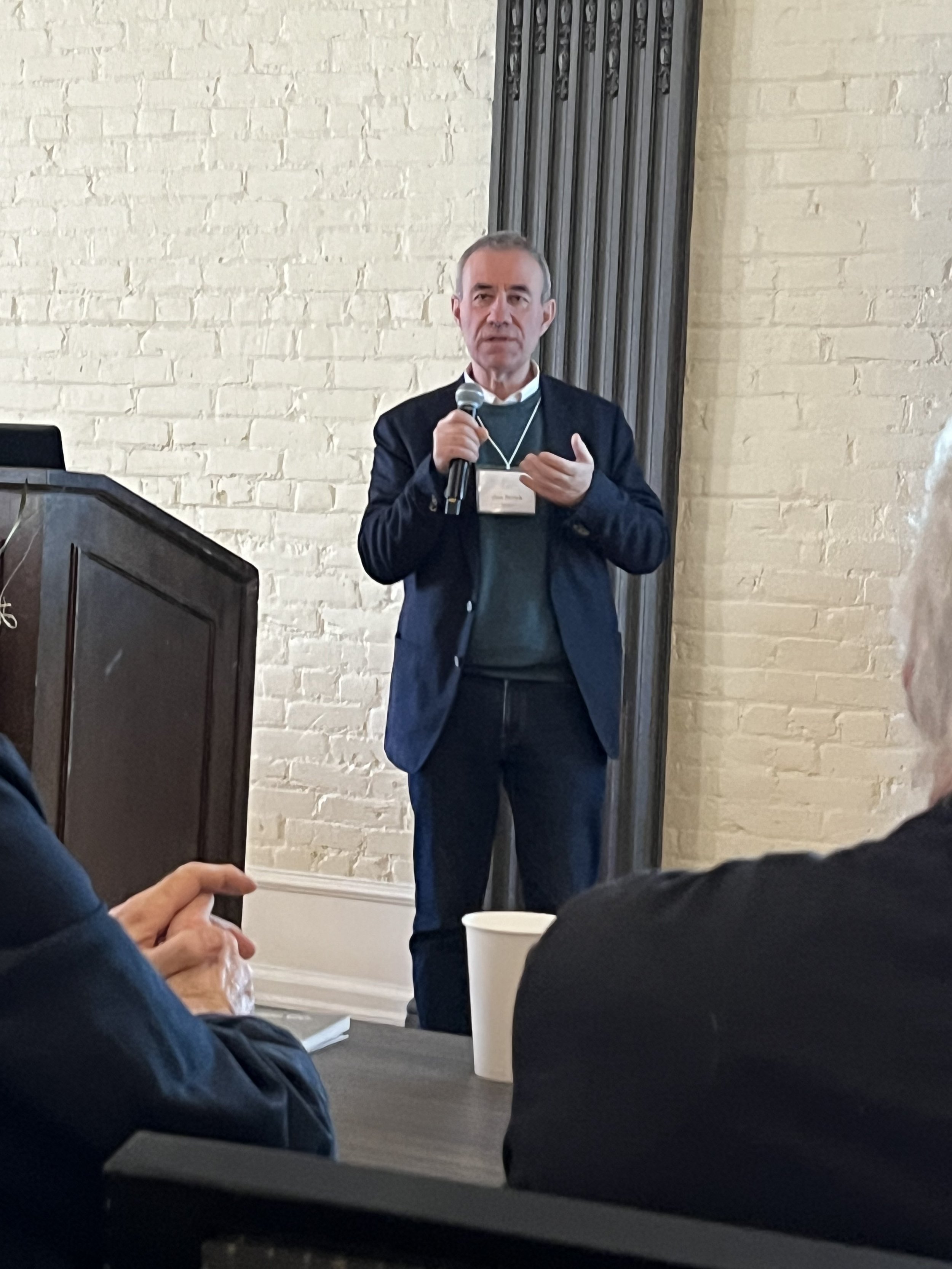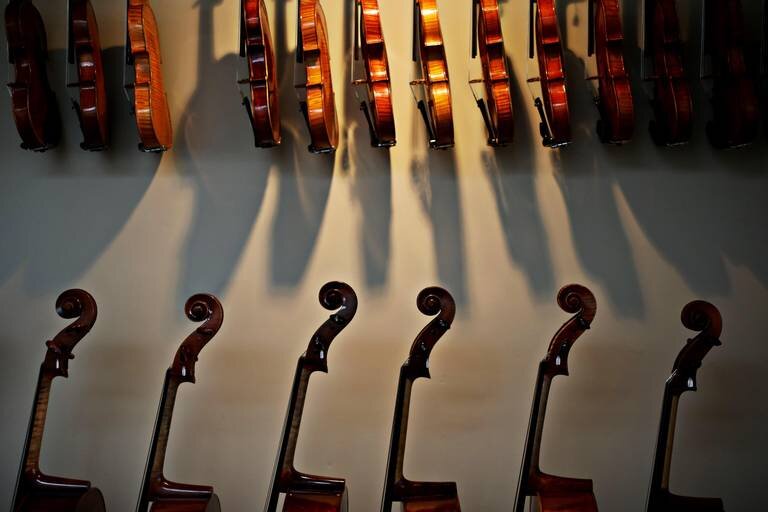A generation later, Sturm remembers the interview with an indulgent smile. About a thousand violins, mostly Italian, mostly 16th to 18th century, currently sell for $1 million to $2 million, according to Philip Margolis, whose www.cozio.com is the closest there is to a global database on fine stringed instruments. Two hundred more go for $3 million to $5 million. That leaves about 50 Strads and del Gesus that go for $10 million and up.
With the eyes of the world on the teetering economy, jaws dropped as gold has soared, approaching $1,900 in August and settling in around $1,700 lately. Yet remarkably, only Bloomberg News took notice in June, when the Lady Blunt, a 1721 Stradivarius, named for the Arabian horse breeder, self-taught Arabist and granddaughter of Lord Byron, who owned and played it from 1864 to 1895, left gold in the dust.
It was the third time in 40 years that the Lady Blunt had been up for auction. At Sotheby’s in 1971, it went for a record $200,000, the equivalent of $1.1 million today, in a shootout between a London investment banker and a Singapore real estate developer. The seller, Sam Bloomfield, was an aircraft manufacturer from Wichita. The buyer — Robin Loh, an overseas Chinese from Sumatra with an honorary degree from Berkeley — was the first Asian to make it to the winner’s circle.
This time, with bidding on line, and Tarisio, a zippy little New York specialist, as emcee, it went for a record $15.9 million after a 100-minute dogfight between two faceless bidders. The seller was the Nippon Music Foundation of Tokyo, already owner of 19 Strads. Known only to those who need to know, the buyer was presumed to be Asian or Russian, in any case not American.
But there was nothing anonymous about a winning bid that computed to an annualized return of 11.5 percent over 40 years or, at $1 million per ounce of violin, around 625 times the same day’s price of gold.
The give-and-take
As might be expected, Cremona’s finest have followed power as well as money. Soviet stars made do with instruments confiscated from the vanished imperial establishment. Satellite republics bought an occasional Strad for local musiciansto take to international competitions. At least one Strad can even be found in North Korea.
But for the most part, they’ve gravitated to the usual geopolitical suspects. (Are you listening, CIA?) From Charles IX to Napoleon III, it was Paris. From the 1880s to World War II, it was London, where W.E. Hill & Sons in London’s New Bond Street became the violin trade’s Greenwich meridian. Between the turn of the centuryand the guns of August, Berlin and St. Petersburg joined the game. Then, with East Asia still behind the moon, came America, and Washington.
In 1915, opportunity knocked at the Smithsonian castle when Dwight Partello, a retired State Department and Treasury official and amateur player, decided to turn down $125,000 from New York’s Metropolitan Museum and leave his collection to “the nation.” On his death five years later, “the nation” seemed a sure winner.
But neither Partello nor the Smithsonian factored for his furious and resourceful daughters. Within weeks, the first sister had recruited a New York Times columnist and a platoon of superstars including the violinist Fritz Kreisler and the conductor Arturo Toscanini for a barrage of public protests. All proclaimed their shock, shock, that 26 great instruments, including four Strads and a del Gesu, should be locked up in glass cases.
The second sister followed with a letter from their father that seemingly conferred ownership on herself. With even the attorney general unwilling to challenge it, the Smithsonian conceded defeat, and the sisters saw the instruments off to Lyon & Healy, the Chicago dealer.
Yet barely a generation later, a critical mass of patrons had not only turned the nation’s capital into an international Strad capital, they had ensured that as many as nine would be played where anyone who wanted to could hear them — with the federal government, of all unlikely agencies, as trustee of at least five.
Washington’s Strads
The great awakening began with a passion for chamber music in happy connubium with a wholesale grocery fortune. On Oct. 23, 1924, Elizabeth Sprague Coolidge, a Chicago heiress and talented amateur pianist, informed the Librarian of Congress that she intended to build the library a concert hall and endow a trust fund to pay for concerts in it. It took Congress only three months to accept the auditorium, and another five weeks to accept the unprecedented endowment.
On March 3, 1925, President Coolidge — no relative — signed the bill. On Oct. 28, 1925, the auditorium was dedicated with a series of five concerts. The whole project had made it to completion in 370 days. (Did you hear that, Congress?)
A windfall of instruments arrived a decade later. This time the passion for chamber music was joined to a carpetmaking fortune. In 1934, Gertrude Clarke Whittall, an Omaha-bred heiress from Massachusetts, settled in Washington, where acquaintance with Louis Krasner, one of the era’s more interesting violinists, guided her to three Stradivarius violins, a viola and a cello.
In 1935 she donated them to the Library of Congress, with a sustaining fund to support a resident quartet, and a reception room where the instruments could be visited and admired when not in action next door in the Coolidge Auditorium. Two years later, the widow of Robert Somers Brookings, a St. Louis hardware millionaire and founder of Washington’s first think tank, added a 1654 Amati by Andrea’s grandson, Nicolo.
Philanthropic lightning struck again in the wake of World War II. This time, passion was coupled to the estate of Sen. William Andrews Clark, who had once owned much of Montana, including the legislature that elected him in 1901. Long widowed in New York, his wife, Anna E. Clark, was a two-, even three-a-day concertgoer. In 1946, the Belgian cellist Robert Maas led her to Emil Herrmann’s flagship violin shop across from Carnegie Hall.
After decades of effort, Herrmann had just reassembled a set of Strads once owned by the legendary Niccolo Paganini. Maas wanted to play a great instrument in a great quartet. With a check from Mrs. Clark for $250,000, the Paganini Quartet was off on a 20-year career.
A day after it retired, the instruments arrived hand-carried at the Corcoran Gallery, where a Clark wing, going back to 1928, already housed a quartet of Amatis donated by Mrs. Clark in 1964. It was agreed that the Strads would remain inseparable; that they would be available to active performers, who would eventually include the Iowa, later Stradivari, Quartet, the Cleveland Quartet, and the first desk players of the National Symphony, and that they would be regularly played at the Corcoran.
Win some, lose some
Some 70 years after the Partello debacle, the Smithsonian finally lucked into a collection, too. The latest donor, Herbert Axelrod, was an immigrants’ kid from Bayonne, N.J., who made his own fortune in home aquariums and pet care. In all ways but one, he could hardly have been more different from his fellow patrons if he had been born with fins. But his shared passion for violins made all the difference.
In 1970, Axelrod bought his first Strad and discovered collecting. His passion for fish had already led to a relationship with the Museum of Natural History. From the 1980s on, the American History museum would be a beneficiary, too. Among his loans and donations were full quartets by Jacob Stainer, a Tyrolean master once held in higher esteem than Stradivari, and J.B. Vuillaume, the inspired Paris maker, dealer and self-promoter, whose Strad copies were often taken for the real thing.
But most remarkable was a quartet of the real — well, almost real — thing, unique in the world, save for a set in Madrid. Among the 600-odd surviving Stradivarius instruments are 13 embossed with flowers, mythical animals, cupids and inlays. By the mid-1980s, Axelrod owned three of them, two violins and a viola. But the cello in Madrid was the sole existing decorated cello. With the help of his dealer, the late Jacques Francais, Axelrod completed his set by engaging Rene Morel, Francais’s resident wizard, to copy its motifs to an undecorated Strad cello.
In time, Axelrod’s wheelings and dealings would get him into trouble. Generous tax write-offs, certified by Vienna-based Dietmar Machold, a famously creative violin dealer now fighting extradition from Switzerland to Austria, drew the attention of the Senate Finance Committee. The sale of some 30 instruments to the New Jersey Symphony led to awkward questions about their price and authenticity.
Donation of the Stainers to Vienna’s instrument museum brought Axelrod an Austrian passport that allowed him to dodge U.S. tax charges, until he was hauled in and extradited from Berlin. In 2005, he was tried and sentenced in federal court. But the Axelrod Strads, regularly played in Axelrod-endowed concerts, remain a glory of the Smithsonian.
Per capita, Washington probably had more Strads than any place else in the world, Sturm told the New York Times in 1984. At the time, he knew of 14. Two were owned privately, by Mstislav Rostropovich, the great Russian cellist, and David Lloyd Kreeger, CEO of Geico and a serious amateur violinist.
Both are long gone. In September 1995, the local stock declined by four more when the Corcoran sold the Paganini Strads to the Nippon Music Foundation for $15 million. There may be still be one or two more in private hands, according to David Basch, a veteran local consultant and freelance player. But none is in public view or earshot.
Yet barring a Tea Party initiative to privatize the collection, that still leaves a reassuringly deep bench. Counting the spectacular Servais cello at the Smithsonian, and the spectacular Tuscan-Medici viola, on loan from the Tuscan Corp., at the Library of Congress, the total currently stands at 11.
There have also been more windfalls. The great and universally adored violinist and composer Fritz Kreisler presented his del Gesu to the library in 1952. The widow of the great and underappreciated violinist and conductor Szymon Goldberg presented his del Gesu to the kibrary in 2007.
Declare them both Strad equivalents. Add the Brookings Amati, again made playable by John Montgomery, the North Carolina maker who is the designated wizard to both the Smithsonian and the library. Add Clark’s Amatis, acquired by Axelrod from the Corcoran and donated to the Smithsonian in the late ’90s. And local resources still hold their own with any other known venue.
But user-friendliness is the clincher. Austria’s National Bank, a Machold client, loans to young players. In the market again for the first time since 1914, Russia’s new rich show off their trophies to 500 closest friends. Taiwan’s Chi-Mei Museum aspires to one specimen from every major maker. The Nippon Foundation continues to set global prices.
But for anyone who wants to see, hear, even play, examine and compare Strads, no place beats Washington. Sturm points with pride to decades of concerts, conferences, record projects, exhibitions, and K-9 school visits at home and on the road from Texas to Cremona, Germany and Japan.
Anne McLean, who programs the concerts in Coolidge’s auditorium, gets her kicks connecting young players with the library’s instruments on site, and the world with them online. Carol Lynn Ward-Bamford, the instruments’ official keeper, rejoices daily in being part of a gift that keeps on giving.
Say what you like about the political scene. (Are you listening, S&P?) We can at least remind ourselves that the local violin scene is still AAA.
Schoenbaum, D (2011, October 21). Strings Attached for Montgomery Violins. Washington Post. Retrieved from https://www.washingtonpost.com
Schoenbaum, a professional historian and amateur player, is author of a social history of the violin, and the people who’ve made, sold, bought, taught, played, loved and stolen it.


























